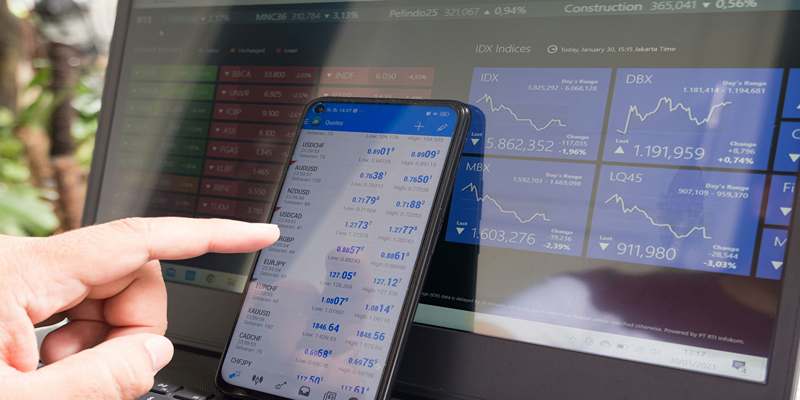Key short term trading indicators for better results
The short-term trading is mostly used by traders who wish to exploit the volatility in the stock market with the intention of making quick profits. These indicators are used in helping the trader decide when to get in or out of the market with minimal risk. Regardless of stock, forex trading, volatility indicators and trend analysis tools are critical to the success of a trader. In this article, they discuss the best short-term trading indicators that will enable the traders to have an easy time when making their trades and, at the same time, help in the management of risks in the business.

Understanding Short Term Trading and Market Indicators
What Is Short Term Trading?
Trading involves the act of purchasing and selling financial securities within a short period of time that may span from minutes to a few days. It is different from position trading, which involves holding a trading position for months or years. In this category of trading, the trader uses charts and indicators for making the choices; it is a short-term trading strategy. It is important to have a good handle on signals concerning the stock market because markets are unpredictable at times. The short-term traders seek to capitalize on small fluctuations in the price of the stocks and make many transactions in a short while due to the knowledge they possess.
Why Technical Indicators Matter in Short Term Trading?
These technical indicators are very useful, especially for short-term trading, because they act as aids in the analysis of price patterns and therefore the potential movement of the price. While fundamental analysis involves the evaluation of the performance, the company, and the overall economy, technical analysis is based on charts and indicators. They give the information on the current trends of the market and the most probable direction the market will take in the future as well as the level of fluctuation expected. It is also important for the trader to know when to enter the market and when to exit the market by using signals of the stock market. Without technical analysis, a short-term trader would not have the ability to make a right decision in volatile markets. Knowledge of these technical indicators enables the traders to devise a certain plan that would reduce risks to the lowest level while increasing the profit as well.
Top Technical Indicators for Short Term Trading
Moving Averages – Identifying Market Trends
Moving Averages (MA) are one of the well-known and versatile short-term trading indicators. Closely related to this, they smooth out the price to reveal long-term trends in the market. Moving average is employed in the identification of the direction of a trend and to give the trader signals that are buy or sell. When short-term MAs are above long-term MAs, it is a buy signal when crossing over, while going the other way means a sell signal. This indicator assists the trader to maintain the correct position with regards to the trends of the market.
Relative Strength Index (RSI) – Measuring the Direction of Market
One technique for understanding market momentum is the RSI, which tracks the rate of price fluctuations. Readings above 70 often indicate that an asset may be overextended and ready for a downturn, while readings below 30 show possible undervaluation, which might result in a recovery. It operates on a scale from 0 to 100. This indicator is frequently used by traders to confirm the strength of an existing trend or to identify potential reversals.
Stock Market Signals for Quick Trading Decisions
MACD – Tracking Market Momentum
One popular method for identifying changes in market momentum is the MACD. It has a histogram that shows the difference between the two main lines, one of which measures momentum and the other of which acts as a benchmark. The momentum line usually indicates a buying opportunity when it rises above the benchmark and a selling opportunity when it goes below. This indicator aids traders in determining a trend's strength as well as if its momentum is accelerating or slowing down. Because of this, it is particularly useful for intraday trading, allowing market players to quickly modify their plans in reaction to shifting patterns.

Bollinger Bands – Analyzing Volatility
When the prices are touching the upper band, it is interpreted as an overbought situation, while touching the lower band is interpreted as oversold. They use the Bollinger Bands for the purpose of anticipating reversals and breakouts of the price. It is worth mentioning that an expansion of the bands is a clear indication of an increased volatility in the near future. This makes it an ideal requirement for short-term trading activities, as it assists the traders in the management of risk when trading.
Advanced Short Term Trading Indicators
Stochastic Oscillator – Timing Entry and Exit Points
It is composed of two lines, namely %K and %D. The fluctuations of these lines above the 80 level indicate overbought, while their location below the 20 level implies that the market is oversold. It is used by traders to find out when there is a possibility of a reversal and to affirm trading signals from other indicators. As short-term trading is purely dependent on the entry and exit position, the Stochastic Oscillator is quite helpful for identifying the momentum change and position entry/exit time.
Volume Indicators – Assessing Market Strength
A rising OBV suggests increasing buying pressure, while a declining OBV indicates selling pressure. Volume confirmation is essential for validating stock market signals from other technical indicators. If a breakout occurs on low volume, it may be a false signal. By analyzing trading volume alongside price action, traders can assess market strength and avoid making impulsive trades. Volume-based indicators add an extra layer of confidence when making short-term trading decisions.
Conclusion
Short term trading relies heavily on technical indicators and stock market signals to make quick, informed decisions. Moving averages, RSI, MACD, Bollinger Bands, and volume indicators provide valuable insights into market trends, momentum, and volatility. Combining multiple indicators enhances accuracy, while risk management strategies help protect traders from significant losses. Success in short term trading comes from practice, discipline, and a deep understanding of market indicators. By mastering these tools, traders can improve their decision-making skills and navigate the fast-paced trading environment with confidence.












